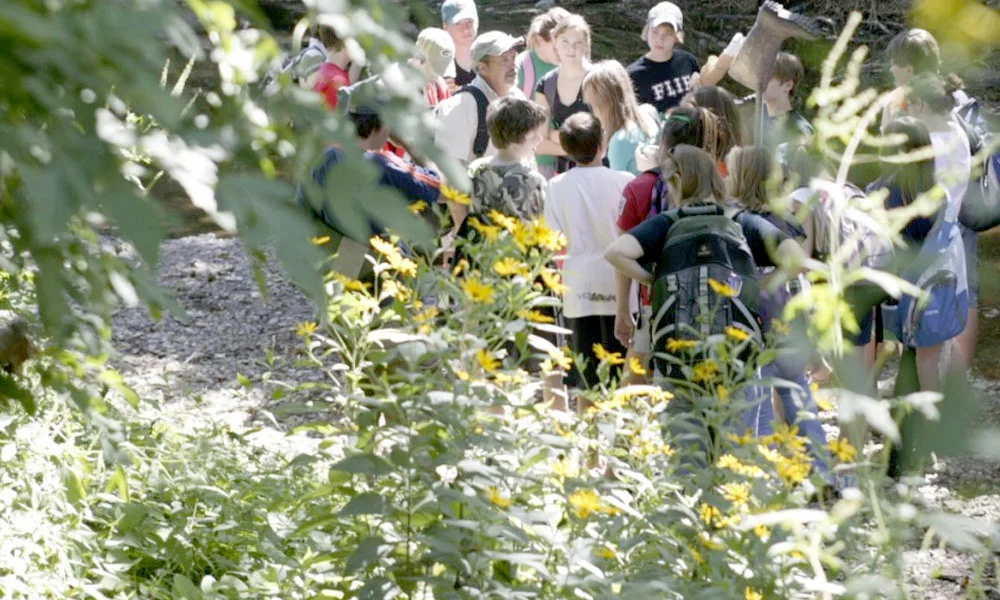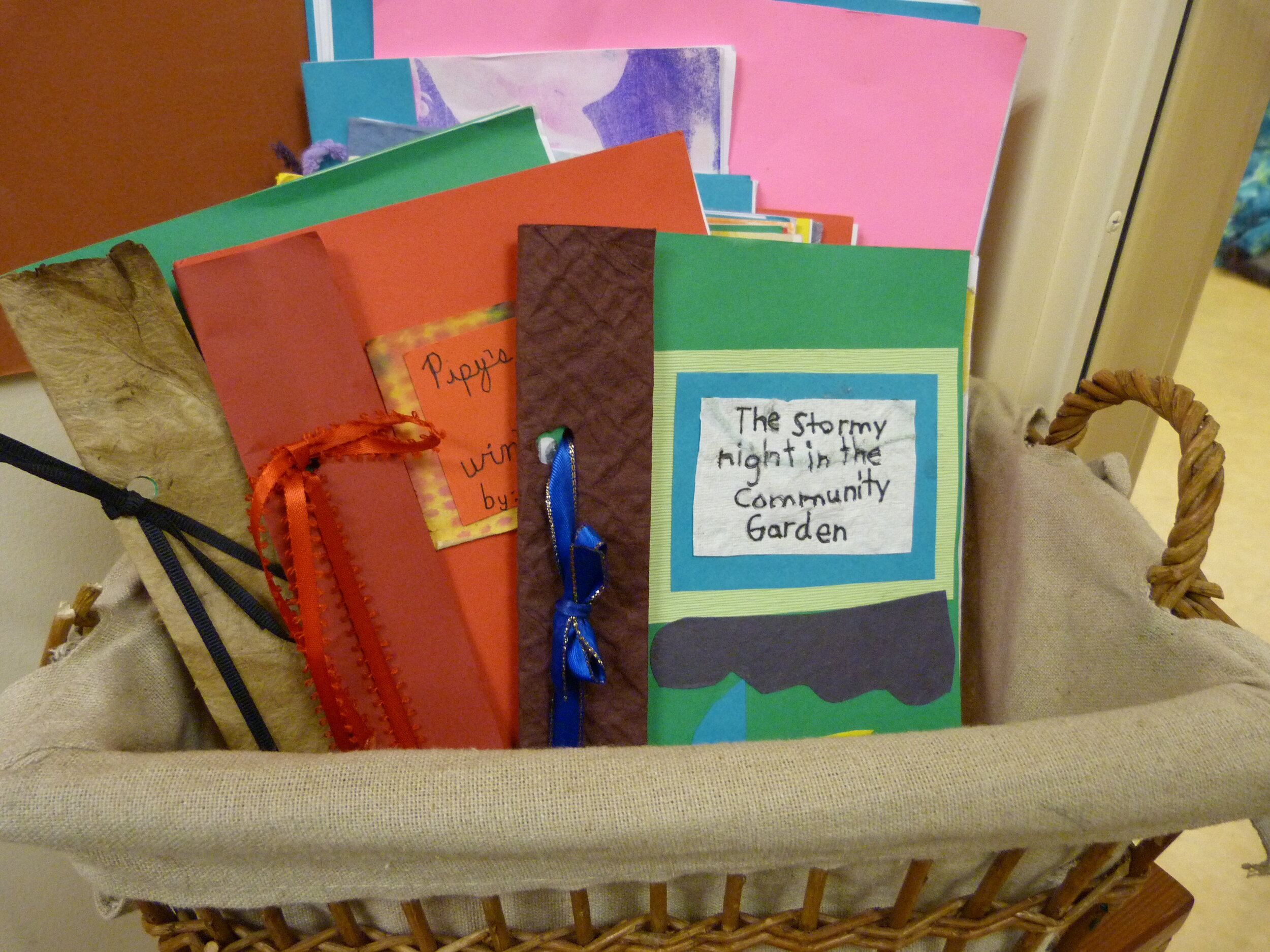Opal School Preschool Classroom, 2012
I loved every part of Opal School…the joy and beauty of the spaces filled with engaged, focused children and teachers; the abundance of enticing materials, plants, books, and light; all kinds of places to gather and think, create and learn together; and the learning made visible on the walls through student work, teachers’ reflections, and powerful images of learning. Opal was housed at the Portland Children’s Museum, surrounded by the rose gardens and forests of Washington Park, two miles southwest of downtown Portland. The school opened in 2001 with founding director, Judy Graves and a development team. The school was named after the young Oregon naturalist, Opal Whitely, who kept a diary of her experience as a 6-year-old growing up in the logging camps near Cottage Grove in the early 1900s.
Judy worked day and night, along with collaborators, to open Opal as a publicly funded charter school with a tuition-based preschool attached, inspired by the work of the schools in Reggio Emilia, Italy, the pedagogy of play, the highest quality literacy practices, a foundation of teaching democracy and social justice, and a commitment to professional development of the local, national, and international community. Because of pandemic financial woes, both the Portland Children’s Museum and Opal School closed their doors on June 30, 2021.
I was fortunate to know many of the educators at Opal from the beginning, before Opal opened. I became friends of the founder, Judy Graves, on a trip to Reggio Emilia in 1996, and we started a correspondence. Over the years, I participated in many professional development opportunities hosted by Opal. I was privileged to co-teach three Field Study graduate classes there for both Butler University and Lesley University. We have been inspired by the work at Opal since its beginnings and have written posts along with Ena Shelley of Butler University, and Yvonne Liu Constant of Lesley University… here, here, here and here and here. Some of my closest and most esteemed colleagues worked at Opal. I am fortunate to have them as friends and to be in touch with them, even though we live on different coasts.
Field Study Graduate Class for Butler University, 2012
The closing of Opal School is a heartbreak and loss for many children and families, teachers and leaders who put their hearts and souls into the school, as well as educators the world over who have been inspired by Opal’s example for so long.
At the same time, what a wonderful thing that Opal was a thriving place of learning for 20 years and that we still have that example. There is now an archive of work being developed for the public by Teaching Preschool Partners, co-founded by Judy Graves. Opal School Online continues to be available as a resource for educators while an interactive archive is designed between now and June 2022.
In addition to the archive, the world is so fortunate to have the new book by Susan MacKay, Story Workshop New Possibilities for Young Writers, that came out into the world just as Opal was closing its doors.
This symbiosis of materials and words through play and inquiry is the essence of the foundation of Susan MacKay’s new book. Susan and her colleagues at Opal School shaped a practice that weaves together literacy learning and many, varied materials to support children’s story telling, play, meaning making, and writing. This practice grew over time at Opal and became known as Story Workshop, similar to Writing Workshop, but different in the way that it integrates work and play with materials as a way to “wake up” and find stories.
Story Books in Opal 1 Classroom, 2012
I remember when I was student teaching in the third grade in Middlebury, Vermont, oh so many years ago, students were writing stories about what they loved. One little brown haired, brown-eyed girl with a sweet, small voice wrote about her doll. But first she drew a beguiling picture of her doll with colored pencils and pen. The doll looked so much like her. She said that she loved this doll so much that she just had to make this picture first. That words alone would not tell the story.
When I was teaching art at Stowe Elementary School, a fifth grader made a clay sculpture of her dog. She said that this dog meant more to her than anything in the world. That she was so pleased to be able to capture her in clay. I suggested that she might want to write about her dog, to tell the story about her and her dog alongside the clay sculpture. I often connected art materials and writing in the art room. I learned early that this relationship is so very powerful. That experience is shaped and remembered and held close because of both image and word…because we make meaning of our lives with both. Story Workshop builds this truth into a practice.
Reading Story Workshop New Possibilities for Young Writers is like taking a class with Susan MacKay and her colleagues. It starts with research and rationale, building the foundation for the practices of Story Workshop. Each chapter shows us how to prepare and move through the sequence of phases that make up Story Workshop. The book is illustrated with full color, gorgeous images that complement the text. And what is the most wonderful part of it for me… it comes alive before our eyes with many links to videos of children and teachers at work in every part of the development of Story Workshop. What a treasure trove of live examples where we can connect with real children and teachers in the process of preparing, wondering together, creating in materials and words, and sharing stories. Congratulations and gratitude to Susan and her colleagues and to Heinemann for this book and most wonderful compendium of videos and printed materials.
Please go out and get this book. It is a legacy of Opal that we all can treasure, continue to learn from and revisit again and again. Thank you Susan and Heinemann, thank you Judy Graves and Opal School teachers over the last 20 years, and thank you Teaching Preschool Partners, (where you can find Judy these days), and The Center for Playful Inquiry (where you can find Susan these days), for keeping Opal alive for all of us out in the world who need your brave and joyful example.
In their final letter to friends, June, 2021, Opal teachers ended with this hope for us.
Often, when we’re not sure what to say or how to say it, we find wisdom in the children’s thinking. Tallulah, a fifth grader, shared this powerful message in her recent graduation speech:
Opal has given me three things. Friends, stories, and myself. I discovered myself at Opal. And although the school and building may be ending, the lessons they taught us never will. We are Opal.
We hope Opal has given you some of these things, too. It's been a true honor to learn alongside you — to make friends, to hear your stories and share ours, and to discover ourselves within this beautiful community. We are so grateful. And Tallulah is right, we are Opal. We trust that the ripples that started here will flow for many more years.























